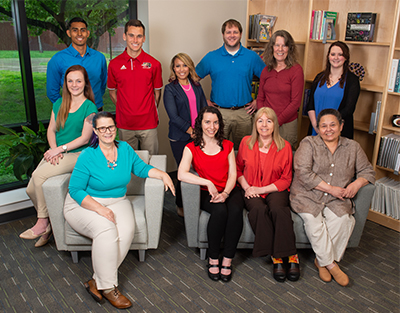 It takes bold leadership and sound, research-based insight to foresee what grand challenges may unfold in the future. In an attempt to get in front of and counteract those potential challenges, the National Science Foundation (NSF) launched its inaugural 2026 Idea Machine Contest: “a competition to help set the U.S. agenda for fundamental research in science and engineering.”
It takes bold leadership and sound, research-based insight to foresee what grand challenges may unfold in the future. In an attempt to get in front of and counteract those potential challenges, the National Science Foundation (NSF) launched its inaugural 2026 Idea Machine Contest: “a competition to help set the U.S. agenda for fundamental research in science and engineering.”
The Southern Illinois University Edwardsville Center for STEM Research, Education and Outreach entered its compelling idea for future investment, “STEM Education Transitions,” which rose to the top 100 of approximately 800 entries from nearly every state in the U.S.
Under the direction of Sharon Locke, PhD, the Center asked: “What types of educational systems not yet imagined promote effective STEM learning in complex transitional spaces, such as learners moving across grades, disciplinary boundaries, or into the virtual?”
“We are thrilled to have been recognized among the top 100 submissions in the National Science Foundation’s important and exciting Idea Machine competition,” said Locke, director of the SIUE STEM Center and associate professor in the Department of Environmental Sciences. “The grand challenges of science and engineering require teams that represent a diversity of fields. When people of different disciplines come together, a dynamic space is created.”
SIUE’s proposal noted the puzzling and surprising nature of transitional spaces which arise as learners go through formal schooling, move from one type of content to another or encounter changing identities and roles.
“This is a rich domain for research that we deemed substantial enough in scope to be a big idea in STEM education,” Locke noted. “In a world increasingly dependent on science and technology, STEM education is important for all, not just for those who will go on to become professional scientists and engineers. Despite many millions of dollars invested in STEM education, we continue to fall short in ensuring broad scientific literacy, and in enabling anyone, regardless of their background, to have equal access and opportunity for success in a STEM career.”
SIUE’s STEM Education Transitions initiative would block the “leaky pipeline” present in STEM disciplines and prevent the loss of individuals at critical points along their educational path.
“When this initiative is successful, the critical junctures in time and place that are currently barriers to progression will instead be spaces where STEM learners find opportunity for new directions and a springboard to advancement,” Locke explained. “As innovators in the public and private sector accelerate progress on virtual learning environments, intelligent tutors and adaptive learning, promising approaches are emerging for supporting educators and students at critical points. Now is the time to capitalize on the ideas of researchers, educators, entrepreneurs and communities to reimagine STEM education systems.”
The NSF 2026 Idea Machine concluded its competition in February 2020 after narrowing the research submissions to the top seven entries. Details on contest winners are available at nsf.gov.
Photo: SIUE STEM Center contributors include (back L-R) Manuel Gomez, Ben Scamihorn, Candi Johnson, Matt Johnson, Georgia Bracey, PhD, Morgan Tallman, (front L-R) Sami Murphy, Dawn Olive, Carol Colannino, PhD, Sharon Locke, PhD, and Henriette Burns. Not pictured are Colin Wilson and Katrina LaCombe.